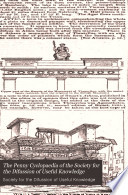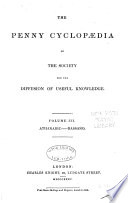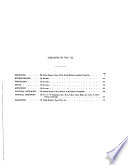 | 1832 - 640 pages
...combinations of lenses, he says — " We shall see the object near at hand, or at a distance, and under any angle we please. And thus from an incredible distance we may read the smallest letters, and may number the smallest particles of dust and sand, by reason of the greatness of the angle under which... | |
 | John M. Moffat - 1834 - 530 pages
...toward any place we please, so that we shall see the object near at hand, or at a distance, under any angle we please ; and thus from an incredible distance, we may read the smallest letter, and may number the smallest particles of dust and sand, by reason of the greatness of the angle... | |
 | Society for the Diffusion of Useful Knowledge (Great Britain) - 1835 - 564 pages
...found in the Royal Library of Paris. Sec MARCUS GH^ECUS.] With regard to the telescope, it must he admitted that Bacon had conceived the instrument,...number the grains of dust and sand, on account^!' the greatness of the angle under which we see them ; ana we may manage so as hardly to see bodies,... | |
 | 1835 - 566 pages
...arrange them with respect to our and objects, that ken and bent as we p; so that, objects may In- .(Tor near, under whatever angle we please ; and thus from...the smallest letters, and number the grains of dust m account of the greatness of the angle under which we see them ; and we may man: irdly to see bodies,... | |
 | Walter Rogers Johnson - 1836 - 516 pages
...towards any place we please, so that we shall see the object near at hand, or at a distance, under any angle we please ; and thus from an incredible distance, we may read the smallest letter, and may number the smallest particles of dust and sand, by reason of the greatness of the angle... | |
 | James Napier Bailey - 1842 - 270 pages
...towards any place we please, so that we shall sce the object near at hand, or at a distance, under any angle we please, and thus from an incredible distance we may read the smallest letters, and number the smallest partieles of dust and sand, by reason of the greatness of the angle under which we may view... | |
 | John M. Moffat, Walter Rogers Johnson - 1842 - 498 pages
...towards any place we please, so that we shall see the object near at hand, or at a distance, under any angle we please; and thus from an incredible distance, we may read the smallest letter, and may number the smallest particles of dust and sand, by reason of the greatness of the angle... | |
 | 1844 - 1128 pages
...thereon had not been put into practice, may be gathered from the following passage in his works : — " We can so shape transparent substances, and so arrange...so that objects may be seen far off or near, under what angle we please ; and thus, from an incredible distance, we may read the smallest letters, and... | |
 | Encyclopaedia - 1845 - 902 pages
...figured, that things at the greatest distance may appeap to be the nearest, and the contrary ; so that, from an incredible distance, we may read the smallest letters, and number things, however minute : thus it is thought that Julius Coesar, on the coast of Gaul, discerned, by... | |
 | Robert Grant - 1852 - 686 pages
...towards any place we please ; so that we shall see the object near at hand, or at a distance under any angle we please. And thus from an incredible distance we may read the smallest letters, and may number the smallest particles of dust and sand, by reason of the greatness of the angle under which... | |
| |